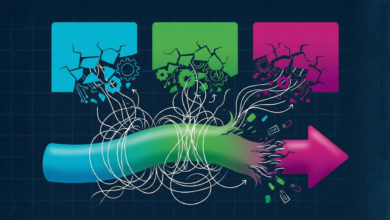Why Some AI Skills Advance Faster Than Others

▼ Summary
– AI coding tools are advancing rapidly due to new models like GPT-5 and Gemini 2.5, enabling more automation for developers.
– Progress in AI is uneven, with coding benefiting significantly while skills like email writing see slower improvements due to the nature of reinforcement learning.
– Reinforcement learning thrives on clear pass-fail metrics, making it highly effective for tasks like bug-fixing and competitive math that can be tested billions of times.
– The “reinforcement gap” distinguishes AI capabilities, favoring easily testable processes over subjective ones like writing or chatbot responses, shaping product development.
– As reinforcement learning remains central to AI, this gap will grow, impacting careers and the economy by determining which tasks can be automated effectively.
The pace of artificial intelligence advancement varies dramatically across different skill sets, with coding and software development surging ahead while other applications like email writing see only modest gains. This divergence stems from how effectively each task can be measured and improved through automated testing systems.
Recent AI models including GPT-5, Gemini 2.5, and Sonnet 2.4 have transformed developer workflows by automating complex programming tasks. Meanwhile, general-purpose chatbots and writing assistants deliver roughly the same utility they provided twelve months ago. Even when underlying models improve, end-user products don’t always reflect these enhancements, especially when those products juggle multiple functions simultaneously.
Reinforcement learning stands as the primary engine behind this uneven progress. This approach thrives where clear pass-fail metrics exist, allowing systems to run billions of self-correcting iterations without human intervention. Software development naturally fits this paradigm, building upon established testing disciplines that already validate code through unit tests, integration checks, and security assessments. These pre-existing evaluation frameworks provide ideal training conditions for AI systems to refine their programming capabilities.
The contrast becomes apparent when examining subjective tasks like composing emails or generating conversational responses. Without objective measurement standards, these skills advance more gradually. This “reinforcement gap” now represents a crucial determinant of which AI applications will mature rapidly versus those that will evolve slowly.
Some domains surprise us with their testability. Video generation recently demonstrated this phenomenon through OpenAI’s Sora 2 model, which shows remarkable improvements in physical consistency, facial coherence, and object permanence. These advances likely stem from sophisticated reinforcement learning systems that evaluate each of these visual properties systematically.
This pattern doesn’t reflect an inherent limitation of AI technology but rather the current industry reliance on reinforcement learning as the primary improvement mechanism. As long as this approach dominates AI development, the gap between easily-testable and difficult-to-measure capabilities will continue widening.
The economic implications are substantial. Processes that fall on the “testable” side of this divide face imminent automation, potentially displacing human workers in those fields. The healthcare sector presents a compelling example, which medical services can be refined through reinforcement learning will significantly influence economic structures for decades to come. With breakthroughs like Sora 2 demonstrating how quickly seemingly subjective domains can become measurable, we may soon discover which professions will transform most radically through AI automation.
(Source: TechCrunch)






One Comment